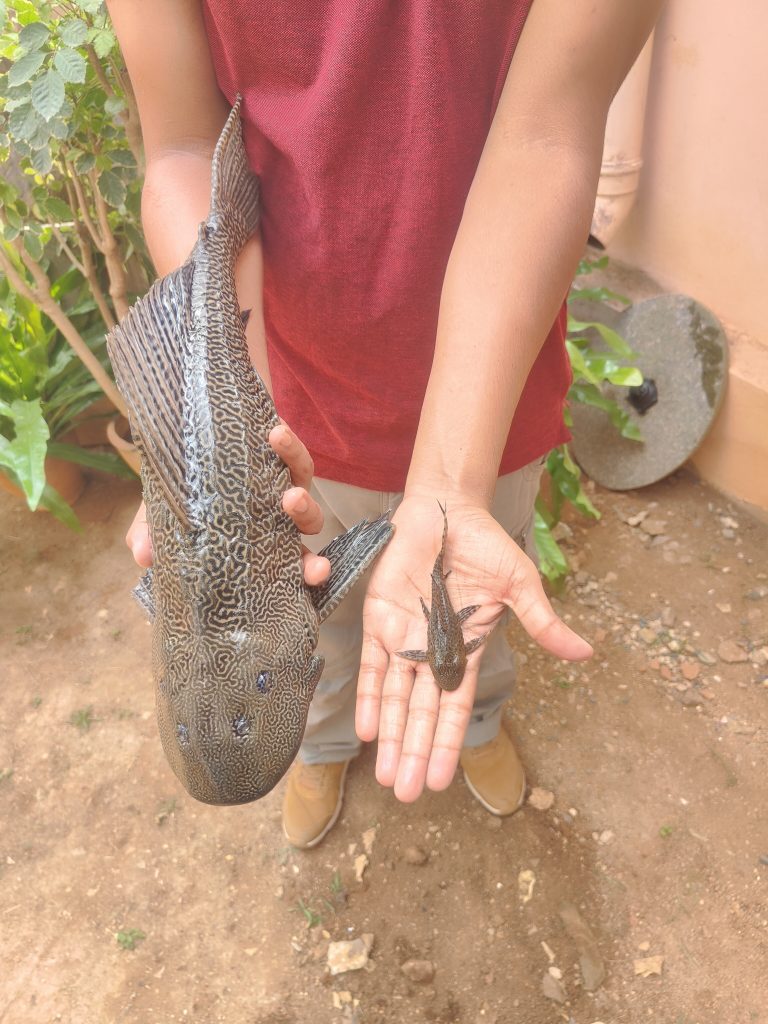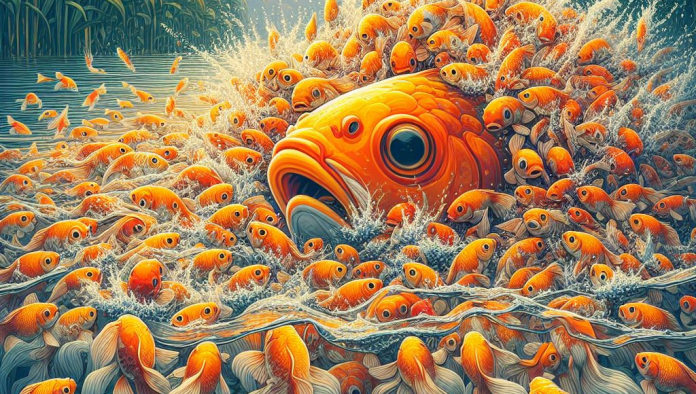‘Once upon a time, there lived Frankenstein’s monster, Yeti, Loch Ness monster, Godzilla, dragon, and a goldfish…’ Surprised to see a goldfish in the league of monsters? Then let’s also add that while the others are fictional, a goldfish might be a real threat we are looking at. We are talking of biological invasions.
Biological invasion is a multi-step process that eventually becomes a major threat to biodiversity. First, a species is intentionally or accidentally transported by human activities, and then introduced at a new location outside its natural range. The introduced species may establish a self-sustaining population, and further disperse to other regions. When it negatively impacts the new ecosystem it has entered, it is called an invasive species. The impact could be ecological, environmental, or economic. For example, when just 24 European rabbits were introduced in Australia for gaming purpose in 1859, they increased to large numbers and spread to the entire continent in less than 50 years. They destroyed the land, crops and also brought a decline to the native biodiversity. The combat to control them in Australia continues till date.
Similarly, many other species had been introduced globally for reasons such as agriculture, farming, ornamental purpose, and recreation. But often these species spillover into the environment, allowing them to invade the ecosystem. One of the major causes of such spillover incidents are also accidental or intentional release of pets, when they eventually turn into a huge menace of destructive nature. Yes, you read it right! Our beloved pets can become a highly invasive species capable of destroying an entire ecosystem. And that could be one of the least troublesome pets such as a cute looking fish.
Let’s see an example from our locality.

Tank-cleaner fishes aka armoured sailfin catfishes from South America are very popular among aquaculture hobbyists in India. Because they do not need high maintenance and also help in keeping the tank clean by feeding on the algal growth. When the pet owner decides not to keep the fish anymore for some reason, they often release the fish into a nearby pond or a lake. There they grow into huge numbers and cause decline of native fishes through competition for food and other resources. In addition to that, their sharp bony plates provide them protection from any potential predator such as birds and other fishes. They are not a favourite delicacy either, and can damage the nets of fishermen when caught. Generally, these fishes are bought when they are just a couple of inches in size, unaware that they can grow more than two feet in length when released into a pond. This kind of monstrous growth can be seen in other fishes as well, like goldfish, many species of catfishes, Alligator gar and Arapaima, some of which can grow up to five feet in length.
Pets turning into invasive species is not only restricted to fishes. Rose-ringed parakeet, Burmese python, Red-eared slider turtle are just a few examples of well-studied invasive species that were initially transported as part of the pet trade. Feral cats and dogs as well are considered among the worst invasive species in the world, responsible for the killing of millions of birds and terrestrial animals annually. Invasive species are also responsible for huge economic losses to the tune of hundreds of crores of rupees every year in India alone. Yet, combating the impact of these invasive species is extremely difficult due to a combination of various reasons such as lack of natural predators, high reproduction and growth rate, their adaptability and resilience to newer conditions etc. And human mediated activities like the intentional release of pets add more fuel to the already raging fire.
Let us shift our focus a little bit towards the elephant in the room. How are we going to curb this menace? Government authorities and some non-governmental organizations have already been working towards tackling invasive species through implementing rules, conducting eradication drives, monitoring illegal pet trades etc. But preventing further introduction of exotic species is possible only through collective action from us, the citizens. It starts with being aware of the problem and the existing rules laid out by the government. If you already own an exotic pet, know about the species through a simple Google search or by consulting a biologist and register them with the government. Obtain proper licenses and permissions to house your pets and to install enclosures. And do register your cats and dogs as well. In case you decide to give away your pet, contact animal shelters or animal welfare organizations for further process.
In contrast, flushing your pet fish or turtle in the toilet or releasing them in the pond, freeing the pet bird, abandoning your pet dog or cat does not only endanger their life, it can also set off a possible biological invasion in future. If you wish to get a pet, discourage wildlife trade by not buying exotic and banned pet species, so that no Marlin needs to desperately seek for his Nemo. Buying exotic pets also promotes the demand and supply feedback which encourages further wildlife trafficking. Displacing any animal from its natural range is not only unethical, but it also disrupts the delicate balance of the ecosystem and poses a huge threat to biodiversity.
And let’s remember that though we call the non-native species as alien species, in reality they are just species that got displaced to alien ecosystems. They are not inherently invasive. Rather, their introduction to non-native regions triggers the process of biological invasion. By now you would have realised that the title of this piece is misleading, and the blame really lies on humans. So, what can we do? Preserving and protecting biodiversity can start at home, sometimes as simple as not flushing your pet tank-cleaner fish down the toilet.


